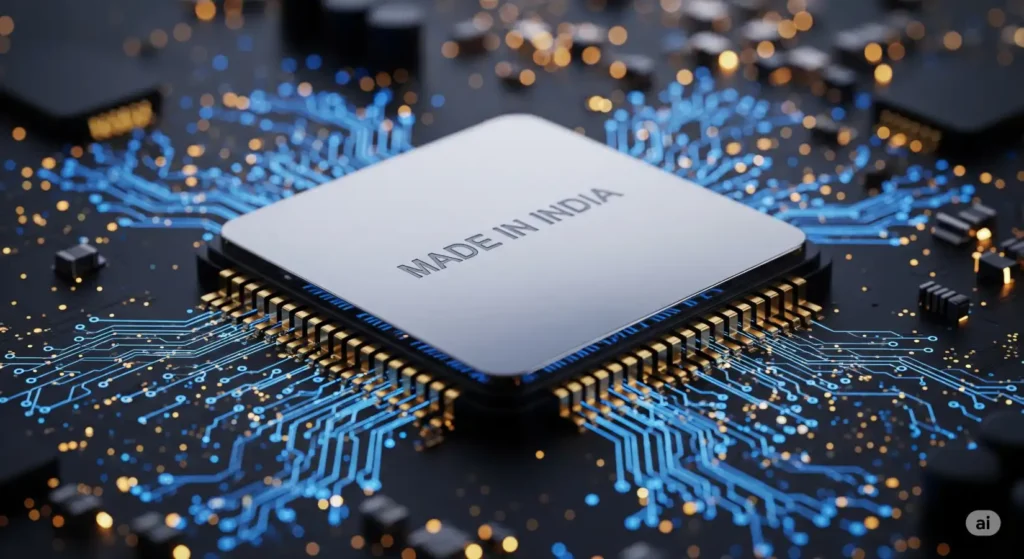India is all set to take a giant leap in its technology journey. During his Independence Day 2025 speech from the Red Fort, Prime Minister Narendra Modi announced that the country’s first fully Made-in-India semiconductor chips will hit the market by the end of this year.
This isn’t just another headline—it’s a turning point for India’s push toward tech self-reliance and a major boost for the economy.

Decades in the Making
PM Modi’s announcement carried a hint of both excitement and determination. He reminded the nation that India had dreamt of building its own semiconductor chips for 50–60 years, but the plans never moved beyond files and meetings.
Now, he said, the country is working in “mission mode” to make up for lost time. What was once a distant dream is now months away from reality. (Source: Economic Times)
The Factories Are Here
According to the PM, six semiconductor units are already operational across the country. In addition, four more manufacturing units have just been approved in states including Odisha, Andhra Pradesh, and Punjab.
These facilities are part of the India Semiconductor Mission, launched in 2021 with an investment outlay of ₹76,000 crore to build a complete chip ecosystem—from design to manufacturing and testing. (Source: Moneycontrol)
Why Chips Matter to You and Me
Semiconductor chips might sound like a purely technical topic, but they touch almost every part of our daily lives. They are the brains inside smartphones, cars, laptops, ATMs, medical devices, and even traffic lights.
Right now, India imports most of these chips. Having homegrown production means:
- Lower costs for manufacturers, which can make tech products more affordable
- Faster supply to meet growing demand
- Better customization for local needs
- Less dependency on global supply chains, which have been shaky in recent years
Big Players and Big Investments
Several large projects are already in motion:
- Foxconn–HCL unit near Jewar, focused on display driver chips, with a cost of around ₹3,700 crore
- Tata Electronics’ Assam chip plant worth ₹27,000 crore, expected to begin assembly and testing by mid-2025
These are not just industrial moves—they bring thousands of jobs, skill-development opportunities, and a stronger tech manufacturing base in India.
Building the Talent Pool
Technology isn’t just about factories—it’s about people. The government’s Chips-to-Startup (C2S) program aims to train 85,000 engineers in chip design and manufacturing.
PM Modi also highlighted that India already contributes 20% of the world’s chip-design engineers, a strength that will now be matched with local manufacturing capabilities. (Source: Narendra Modi Official Site)
📌 Read More
Challenges Ahead
Of course, the road to becoming a semiconductor powerhouse isn’t without hurdles. The global chip industry is extremely competitive, requiring cutting-edge technology, massive investments, and strict quality control.
But with political will, industrial partnerships, and a growing talent base, India seems ready to take on the challenge.
A Step Toward Atmanirbhar Bharat
For Indian readers, this development isn’t just about technology—it’s about independence. Every chip made in India is a step away from import dependency and a step closer to Atmanirbhar Bharat (self-reliant India).
By the end of 2025, when the first batch of Made-in-India chips hits the market, it won’t just power devices—it will power a new chapter in India’s tech story.
SameerTech.in Take:
This isn’t just news—it’s a signal. If India can successfully pull off large-scale semiconductor production, it could transform our electronics industry, generate jobs, and make technology more accessible to everyone.



